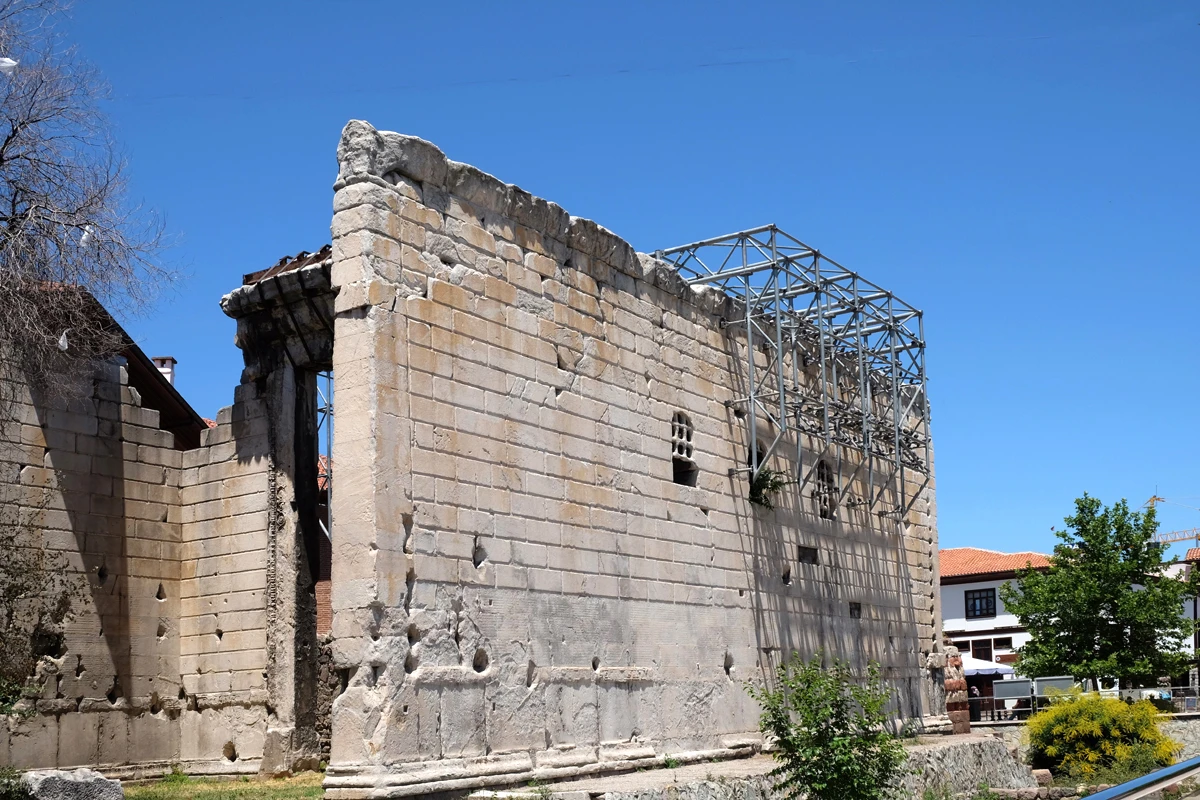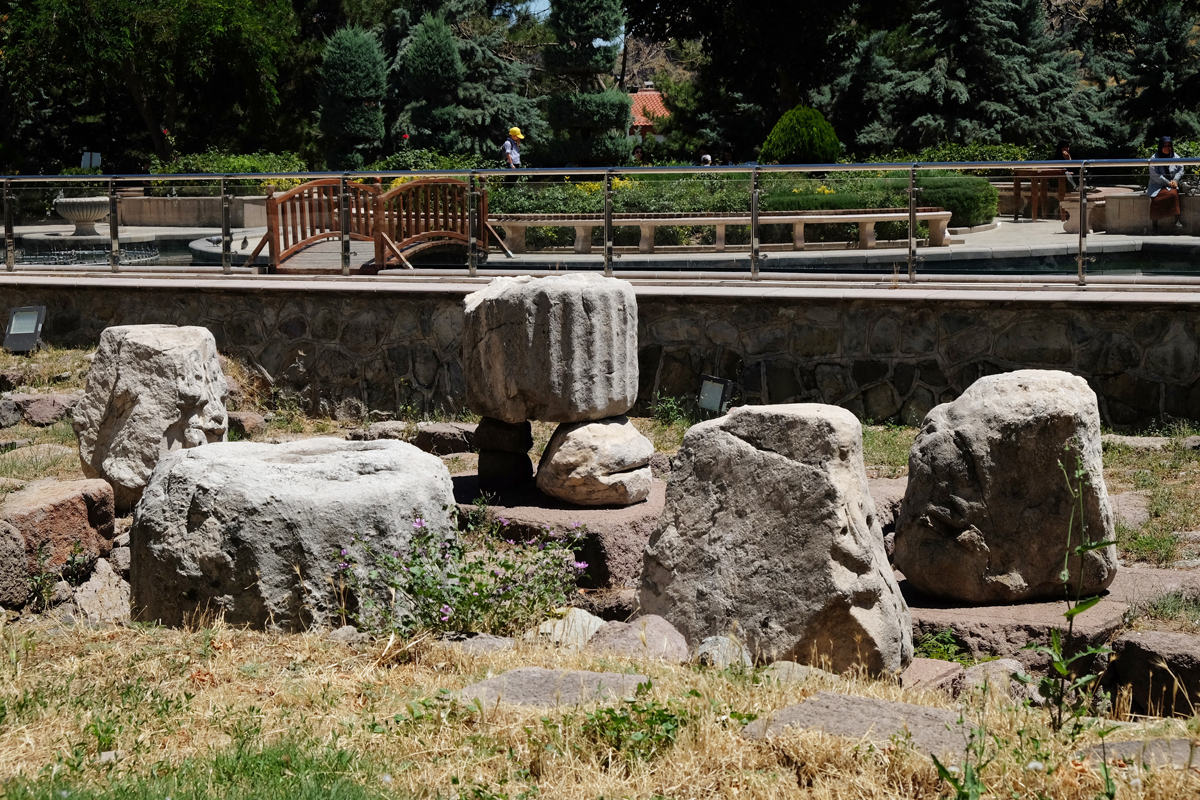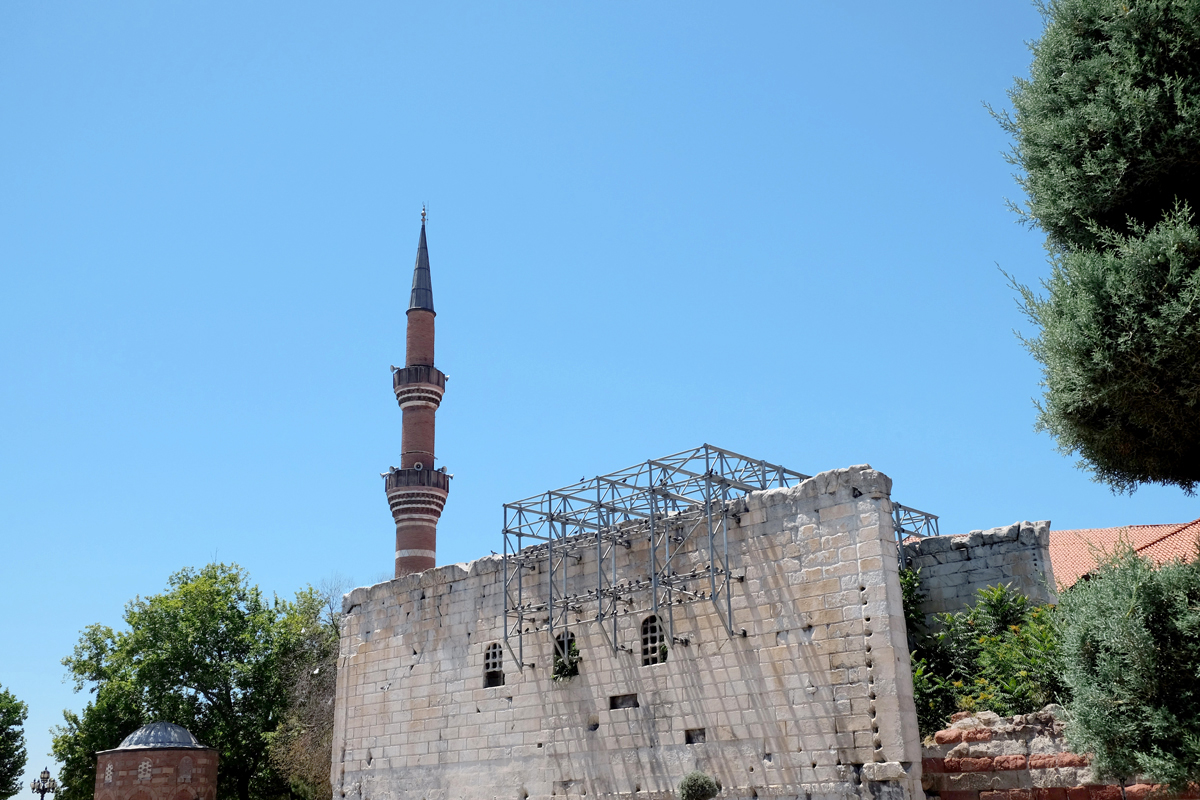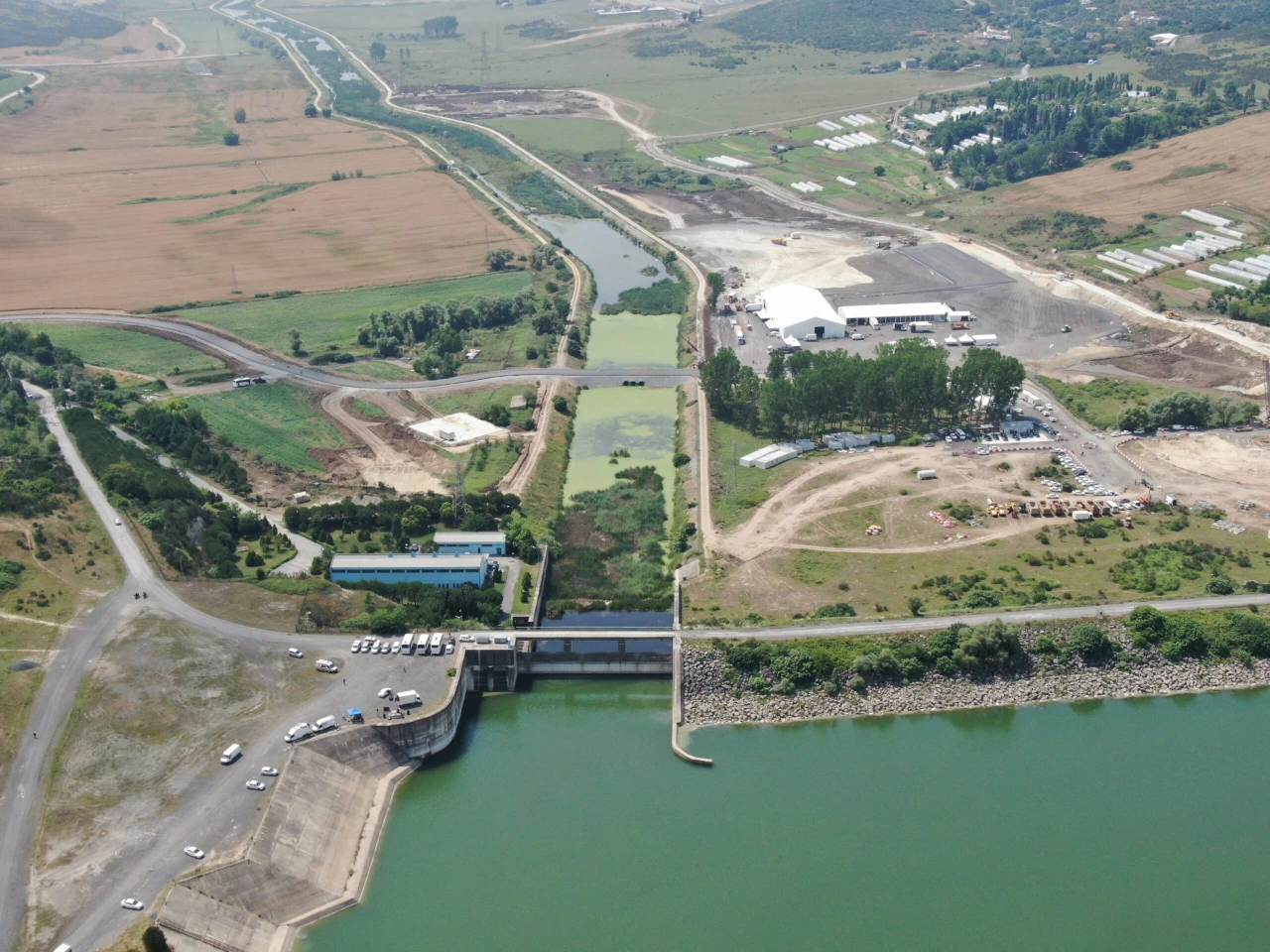Emperor Augustus’ Türkiye diaries: Unlocking Roman Empire’s origins
 A view of the remnants of the Temple of Augustus in Ankara, Türkiye. (Photo via SAMM)
A view of the remnants of the Temple of Augustus in Ankara, Türkiye. (Photo via SAMM)
The Augustus-Roma Temple in Ankara, one of the most significant structures from the Roman period, was built after the province of Galatia was incorporated into the Roman Empire by Emperor Augustus (27 B.C.-14 A.D.).
Dedicated to Emperor Augustus and the local goddess Roma, the temple was constructed in the new provincial capital of Ankyra. (modern-day Ankara).

Temple of Augustus’s architectural features
The Temple of Augustus features a southwest-northeast orientation, measuring 36 by 54.82 meters (118.11 feet by 179.86 feet). It showcases a Corinthian style with a pseudo-dipteral plan, resting on a podium accessed by a set of eight steps, approximately 2 meters high.
Originally, the temple was surrounded by eight columns on the short sides and 15 columns on the long sides. The pronaos (front chamber) contained four columns, while the opisthodomos (rear chamber) had two columns situated between two wall projections in an antis style.
Today, much of the foundation on the south and southeast sides of the temple belongs to a possibly unfinished colonnade (peristasis) and the stepped structure (krepidoma) that surrounded the platform.
Over time, the temple’s architecture underwent alterations. In the early sixth century, it was converted into a church by the Byzantines. During this conversion, the floor level of the cella (the main room) was leveled, the wall between the cella and the opisthodomos was removed, an apse was added to the rear, and three large windows were opened in the southeast wall of the cella.

In 1427-1428, Haci Bayram Veli Mosque was constructed in connection with the northwest corner of the temple. Early written documents suggest that after the mosque’s construction, the temple was used as a madrasa (Islamic school) for some time, indicated by a portico added to the opisthodomos and graffiti on the temple walls.
The mosque and the nearby turbe (tomb) still serve as one of the capital’s most significant places of worship. This hill, where Haci Bayram Veli Mosque was built, has been a sacred space and place of worship for millennia.
Despite significant damage in 1834 to a large portion of the northwest wall of the cella, the pronaos, main entrance, cella and temple have largely been preserved to this day.

Inscriptions of Temple
After the death of Emperor Augustus (27 B.C.-14 A.D.), the “Res Gestae Divi Augusti” (The Deeds of the Divine Augustus) inscription was inscribed in two languages with red paint on the walls of the Ankara Augustus-Roma Temple.
The Latin version was inscribed on the anta walls facing the pronaos, while the Ancient Greek version was inscribed on the exterior of the southeast wall of the cella, both of which have survived to this day. Fragments of two other copies of this inscription, titled “The Deeds of the Divine Augustus,” have also been found in Anatolia.
At the northwestern end of the Anta walls, there is a list of priests detailing their accomplishments, while a brief inscription related to a slightly later priest is located at the southwestern end.
This bilingual inscription detailing Augustus’s accomplishments has stood the test of time in Ankara and holds significant historical value, being the only complete preserved copy of the original inscription lost in Rome, and it is one of the most valuable documents illustrating the Roman era from an archaeological perspective.
The first studies of the inscription were conducted in the 19th century by W.J. Hamilton, C. Humman, O. Puchstein and T. Mommsen, who referred to it as the “Queen of Inscriptions.”

Discovery, replication of inscription
In 1554, Ogier Ghiselin de Busbecq, sent to Anatolia by Holy Roman Emperor Ferdinand I, was the first to record this text discovered on the temple walls. Later, during the reign of Napoleon III, Georges Perrot and Edmund Guillaume, also sent to the Ottoman Empire, produced the first complete copy.
They managed to note the entire Latin text and part of the Greek version, facilitating its reproduction in Europe. In 1859, Andreas Mordtmann was commissioned by the Berlin Academy to replicate the inscription, but he withdrew because of concerns about damaging the inscription and not securing permission from the local inhabitants.
In 1882, Carl Humann made plaster casts of both texts and returned to Germany, where these casts were exhibited at the Berlin Museum. The following year, Theodor Mommsen published a book on the inscriptions, including engravings inspired by the plaster casts. Hamit Dereli translated the text from Latin into Turkish, publishing it under the title “Ankara Aniti” (Monument of Ankara).
Source of main text
Before Augustus died in 14 A.D., he left a sealed will in the Vesta Temple, as reported by Suetonius, containing three rolls (four according to Cassius Dio). The first roll included instructions for the funeral ceremony, along with a personal account of his life written in Latin. He ordered these to be inscribed on bronze tablets and placed in front of his monumental tomb in Rome.
The second roll, called “Res Gestae,” contained texts inscribed on two bronze tablets affixed to two columns in front of Augustus’s mausoleum in Rome. These texts were later inscribed on the walls of divine Augustus temples constructed throughout the vast territories of the Roman Empire. The most complete version of such a text survives at the Ankara Monument.
Content of inscription
The “Res Gestae” document, inscribed in both Latin and Greek at the Ankara Monument, begins with a brief introduction, followed by 35 main paragraphs, and concludes with an appendix prepared after Augustus’s death. Historians generally categorize these 35 main paragraphs into four sections, although some propose different divisions.
- First Section (Paragraphs 1-14): This section details Augustus’s political career, the special honorary titles and positions conferred upon him during his lifetime.
- Second Section (Paragraphs 15-24): This section discusses the distributions of money to the Roman populace, public games, and monuments constructed for the people by Augustus.
- Third Section (Paragraphs 25-33): This section outlines the military successes and diplomatic efforts of Augustus and the gains made for the empire.
- Fourth Section (Paragraphs 34-35): This section provides documentary evidence explaining the origins of Augustus’s name and titles, including “Father of the Country.”
The appendix shifts from a first-person narrative to a third-person perspective, indicating it was not personally prepared by Augustus. It summarizes the earlier texts, discusses Augustus’s unique position within the Roman state, and lists the monuments he restored or rebuilt using his personal funds, amounting to 600 million silver denarii.
Converting this sum to modern currency is nearly impossible; however, it is estimated that Augustus’s annual public expenditures during his imperial reign were around 200,000 to 300,000 silver denarii.

After Augustus died in 14 A.D., a copy of the “Res Gestae Divi Augusti” text was inscribed in Latin on the inner and three walls of the Ankara Monument. The six pages of the Latin inscription were inscribed 2.7 meters above the ground, with each wall measuring 4 meters high.
The first three pages on the left side of the entrance contain 46 lines, with section headings provided across the three pages, while each of the three pages on the left side has 54 lines.
The significance of the Ankara Augustus Temple lies not only in its architectural grandeur but also in its role as a vital historical document that preserves a pivotal moment in Roman history, connecting past and present through its inscriptions.



